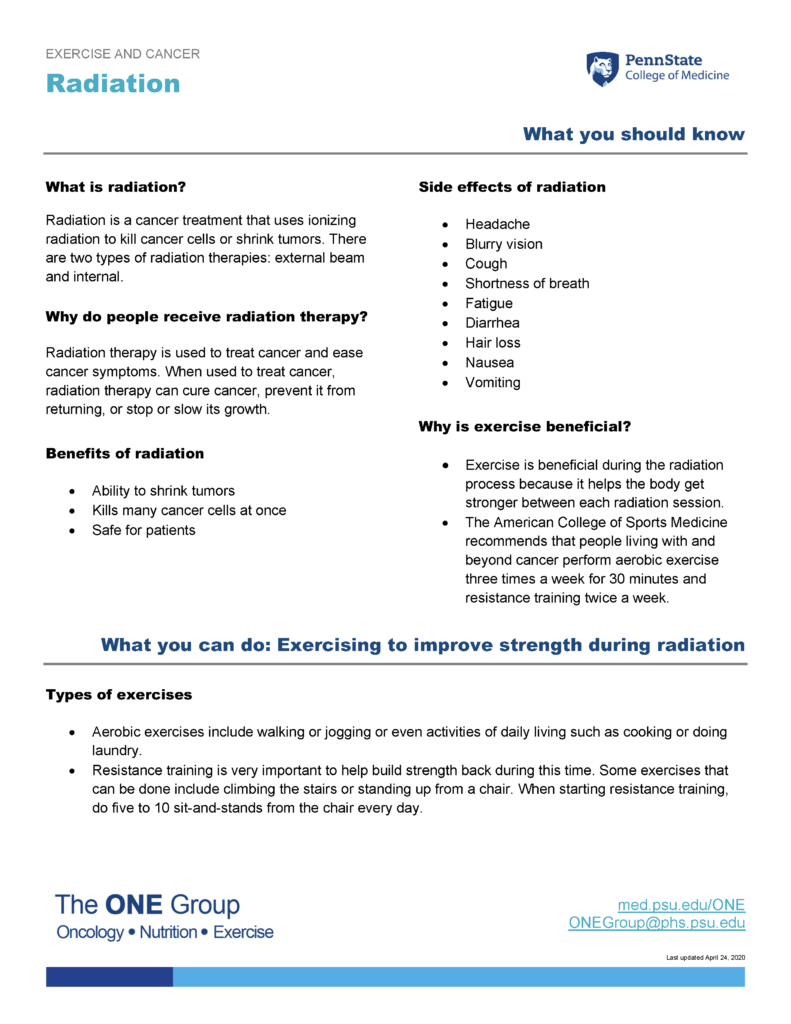Learn about radiation treatments for cancer in this guide from The ONE Group (Oncology – Nutrition – Exercise) at Penn State College of Medicine.
Jump to topic
Search
What you should know
What is radiation?
Radiation is a cancer treatment that uses ionizing radiation to kill cancer cells or shrink tumors. There are two types of radiation therapies: external beam and internal.
Why do people receive radiation therapy?
Radiation therapy is used to treat cancer and ease cancer symptoms. When used to treat cancer, radiation therapy can cure cancer, prevent it from returning, or stop or slow its growth.
Benefits of radiation
- Ability to shrink tumors
- Kills many cancer cells at once
- Safe for patients
Side effects of radiation
- Headache
- Blurry vision
- Cough
- Shortness of breath
- Fatigue
- Diarrhea
- Hair loss
- Nausea
- Vomiting
Why is exercise beneficial?
- Exercise is beneficial during the radiation process because it helps the body get stronger between each radiation session.
- The American College of Sports Medicine recommends that people living with and beyond cancer perform aerobic exercise three times a week for 30 minutes and resistance training twice a week.
What you can do: Exercising to improve strength during radiation
Types of exercises
- Aerobic exercises include walking or jogging or even activities of daily living such as cooking or doing laundry.
- Resistance training is very important to help build strength back during this time. Some exercises that can be done include climbing the stairs or standing up from a chair. When starting resistance training, do five to 10 sit-and-stands from the chair every day.
How to do sit-and-stands
Step 1: Start by sitting in a chair.
Step 2: Without using your hands for support, stand up.
Step 3: Sit back down.
Step 4: Repeat.
Where can I find more information about aerobic and strength-training exercises?
If you are interested in starting aerobic and/or strength-training exercises, The ONE Group (Oncology – Nutrition – Exercise) provides videos demonstrating proper form for more than 50 exercises.
If you have any questions or concerns, please contact your physician.
Notes
References
- American College of Sports Medicine Moving Through Cancer initiative
- Cancer.net
- National Cancer Institute

